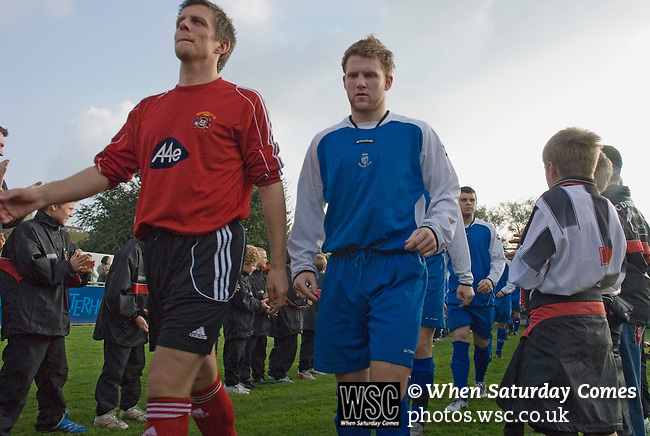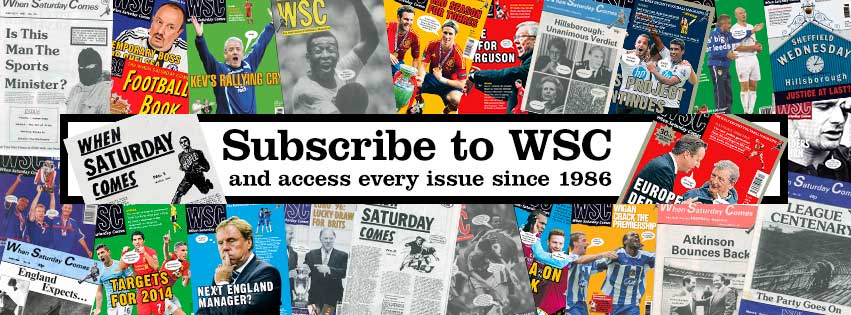
In the game’s early days matches were mostly watched by curious observers but, as crowds increased, clubs started to provide their followers with a sense of belonging
24 January ~ The original purpose of a football club can easily be forgotten in the modern era. Clubs were formed for the benefit of their members, in order for them to play football. But not all members could play in every game – perhaps due to numbers, ability, injury or age – so some would just watch. These non-playing members became their club’s first supporters.
Then came the friends and relatives of playing and non-playing members. They attended matches by recommendation or persuasion, and became supporters by association. And then came others, from the local community, not necessarily associated with the club, but curious about the spectacle they had heard of, or literally heard from a distance. Many of these early spectators were young people who had free time, particularly on Saturday afternoons, due to changes in employment legislation.
It was during the 1870s and 1880s, a period of rapid growth for the game, that many of modern football’s biggest clubs were founded. Most of them emerged from institutions – workplaces, churches, cricket clubs – that provided ready-made support. Manchester United were formed in 1878 as Newton Heath LYR by workers at a Lancashire and Yorkshire Railway depot. Manchester City were originally St Mark’s, formed in 1880 by members of a church in West Gorton. Arsenal were Dial Square, a works team formed in 1886 at the Royal Armaments Factory in Woolwich. Gradually, these clubs expanded beyond their institutions and began to represent their communities.
Several big clubs were formed by groups of young men or boys. Newcastle United were formed in 1881 as Stanley FC by teenagers belonging to Stanley Cricket Club. Tottenham Hotspur were formed in the following year as Hotspur FC by schoolboys, most of them under 15 years of age. Everton, Aston Villa and Fulham all emerged from Sunday schools, which were important social hubs during the Victorian era, particularly for working-class kids.
The emergence of popular clubs and the development of fanbases were crucial stages in the evolution of the football fan, and in the shift from appreciation to fanaticism. Affiliation with clubs gave supporters a sense of belonging, and gave them a stake in the game, which increased interest – and often enjoyment. If their club won, they shared in the reward. “They won” became “we won”. Supporters could bask in reflected glory, and a win for their club could make them feel better about themselves.
When FA founding member clubs Forest and Barnes played each other in 1863, there was no indication of any partisanship on behalf of those watching. The Bell’s Life newspaper said the game “elicited great applause from the spectators” in favour of both teams. An indication of where football fandom was headed could be found further north, where early games between two pioneers of the Sheffield game, Sheffield FC and Hallam, were attended by “noisily jubilant partisans”, who loudly cheered their own teams and “hooted” at their opponents. Local rivalry had existed long before football rivalry. While their respective clubs had only just begun to play each other, there was already friction between the people of Sheffield and Hallam. Football became a conduit for that contention.
One of the game’s biggest early conflicts was between the growing fanbases of Burnley and Blackburn Rovers. As was often the case, this football rivalry had been fuelled by an industrial rivalry, between the towns’ cotton mills. (Burnley v Blackburn is still referred to as “the Cotton Mills derby”.) The two sides first met in 1879, and played each other 13 times before the formation of the Football League. By the time the League got underway, the football enmity was fierce enough to stand on its own, having intensified over almost a decade of derby meetings.
One early League match, at Turf Moor in February 1890, resulted in an incident known as the “Burnley Riot”. Burnley lost 2-1 following some controversial decisions from the referee, who just happened to be the brother of Blackburn’s goalkeeper. At the final whistle, thousands of aggrieved Burnley fans raced onto the pitch and chased the referee into the grandstand, out of the back of the ground and into a neighbouring house. A large police escort was required to escort the referee to the train station, “amid a hooting, running, stone-throwing mob”.
The match, according to one reporter, had “aroused the feelings of the crowd to a height never before witnessed”. Football fans were no longer passive observers. Growing affiliations and rivalries had turned impartial spectators into partisan supporters – and fanatics. Paul Brown
Photo by Paul Thompson/WSC Photos: The world’s oldest derby between Sheffield FC and Hallam – though the rivalry existed before the clubs
This article first appeared in WSC 371, January 2018. Subscribers get free access to the complete WSC digital archive – you can find out more details here
